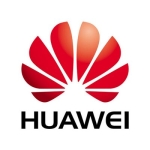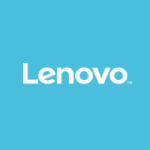What is our primary use case?
We use Pure Storage FlashArray because of the increased demand for high IOPs for some of our internal applications that were required to read and write in faster sway.
How has it helped my organization?
This solution helped our organization a lot to increase the performance of reading and writing in the storage itself.
Our business is in the utility functionality where we are creating and maintaining IT service for our utility sector. We are an electricity and water company where we are consuming a large number of bandwidth regarding the bill cyclings, read and write from the meters in the fields. All of this data is stored in the same storage. Pure Storage FlashArray has helped us to improve the reporting and the billing cycle.
What is most valuable?
The most valuable features of Pure Storage FlashArray are the management view of the solutions, ease of provision, and deprovision, it is fantastic.
What needs improvement?
I would like a feature to integrate with external or cloud solutions. For example, if I want to use this storage for a backup from the cloud, I want to have integration with the cloud vendors, such as Microsoft, Oracles, or Amazon. It could be available as an API to allow seamless integration. Additionally, the solution could improve by having native integration with a cloud provider, such as VMware or Microsoft, this would reduce the need to use third-party solutions to complete the task.
For how long have I used the solution?
I have been using Pure Storage FlashArray for approximately three years.
What do I think about the stability of the solution?
I have found Pure Storage FlashArray to be stable.
What do I think about the scalability of the solution?
Pure Storage FlashArray is scalable. However, I think we are reaching the maximum for the current version of the storage. We are looking for the advanced version, which is the X2 model.
We are a large company and the total number of end-users that are using the solution is approximately 3,000.
We are using Pure Storage FlashArray extensively in our organization. We use it for everything, such as binaries and databases. We plan to increase usage in the future.
How are customer service and support?
When we set up the solution we did not require a lot of support from the teams. The good thing about the support is they can access and upgrade the framework and all other aspects. However, the account managers from Pure Storage are not communicating very well with us. We want to talk to them about what features should be used, use cases, best practices, and other technical discussions. Additionally, we would like to know about the new features, the introduction of new technology in the storage itself.
It would be nice if they could communicate this information to us.
The support is very good. They always call us for technical upgrades and firmware. If we have any issues they log in and we open a session for them, and they help us. The only issue is the time zone difference between our time zone and their time zone.
I would rate the support from Pure Storage FlashArray a five out of five.
How was the initial setup?
Pure Storage FlashArray was straightforward and easy to set up. The full process took approximately two weeks.
I rate the initial setup of Pure Storage FlashArray a four out of five.
What about the implementation team?
We used a combination of implementation assistance. There was a remote team from Pure Storage and a local team from a general local partner that helped us.
There were three people who did the handling of the deployment. The management of the solution is completed by only one of our teams, only they can handle everything in the installation. There are engineers and architects that are part of the team.
What's my experience with pricing, setup cost, and licensing?
The price of the solution can be a bit expensive. There is an additional fee for support.
Which other solutions did I evaluate?
We were looking for a FlashArray solution, and at that time we compared the other products in the market. I found that Pure Storage, is a company that focuses only on storage and they are very specialized in this area. I tested the solution, we did a BOC for six months. After we did all the tests for all the scenarios for six months, we were very happy to move to the Pure Storage FlashArray.
We evaluated HP, EMC, and Oracle solutions.
The feature that impressed us with Pure Storage FlashArray was its ease of use and simplicity.
What other advice do I have?
I would recommend this solution to others. It is very simple to use. Many people are looking for a solution from an engineering perspective, they want something very easy to use and that everybody can use it. They want a solution that does not require an expert engineer to operate it. A normal engineer can manage and handle it with ease. Reporting is very good in the storage it gives you an overview of everything, and it is very easy to provision, deprovision, especially when you have a cloud environment. It is easy to provision and deprovision when you have customers.
I rate Pure Storage FlashArray a nine out of ten.
Which deployment model are you using for this solution?
Hybrid Cloud
If public cloud, private cloud, or hybrid cloud, which cloud provider do you use?
Microsoft Azure
Disclosure: My company does not have a business relationship with this vendor other than being a customer.














